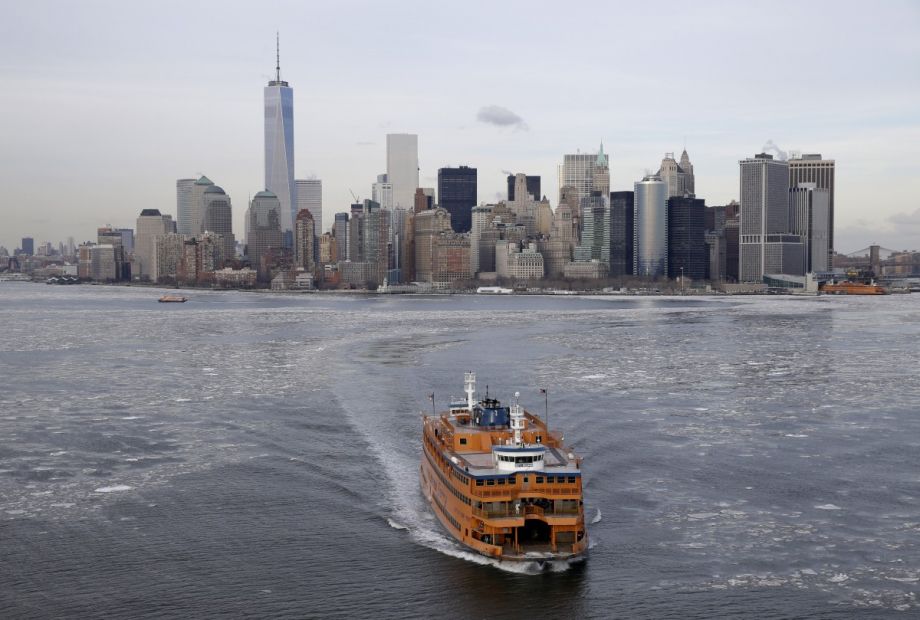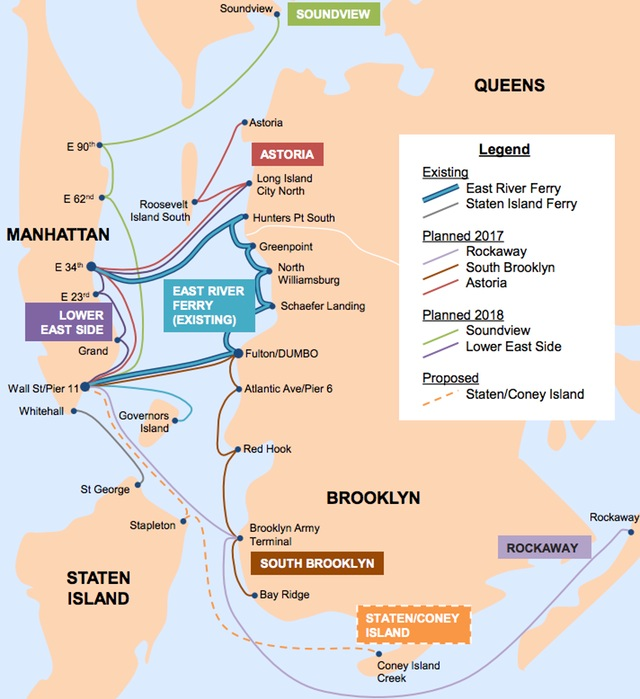For a city built on islands, where getting stuck on a bridge or in a tunnel is a routine part of life, New York’s ferry system is skeletal at best. The city’s two major operators have a combined daily ridership of about 100,000. Ferry schedules and fares are not integrated with the train and bus systems that provide service for the vast majority of the city’s commuters. And huge portions of the city’s 520 miles of waterfront remain ignored by water transit.
Naturally, transportation planners see an untapped market. In February, Mayor Bill de Blasio proposed the creation of a ferry system serving all five boroughs, promising fast service and relatively low upfront capital costs, with rides costing the same as subway or bus fare. The main transportation networks are chronically underfunded and overcrowded, and the city wouldn’t have to spend money to acquire any expensive rights-of-way for the boats. Plus, anecdotal evidence suggests people really love being on boats.
The question experts seem to be asking isn’t “Are ferries a good idea?” but rather “How can ferries fit into the city’s overall transit network?” Joan Byron of the Pratt Center for Community Development believes that in light of the rapid rezoning and development that New York’s waterfront has seen in the last 20 years, waterborne transit is more needed than ever. Pointing to recently released data showing that “some of the subway stations that have shown the biggest percent increases in ridership are … the first station the train hits when it comes out of the East River tunnel,” she holds up ferries as a way to relieve the subways’ space crunch.
Byron talked about those stats last week as part of a panel on ferry transit at the Metropolitan Waterfront Alliance’s 2015 “floating conference.” Her co-panelist, Douglas Adams of the MWA, filled in some of the essential numbers of the ferry plan: Five routes and 24 stations, rolled out over 2017 and 2018, with an estimated 4.5 million annual riders once the system is complete. A major administration talking point is the system’s low cost: $55 million to construct landings, and $10 million to $20 million to operate the ferries annually. Calling this a “rounding error” when compared to the city’s other transportation costs, Adams said that the ferry system would require a smaller subsidy per passenger than both the Staten Island Ferry and the Long Island Rail Road.
While traditional ferry services have taken New Yorkers on point-to-point trips for decades, Roberta Weisbrod, of the Worldwide Ferry Safety Organization, pointed out the shift with this relatively new approach. “Over the last decade or so,” Weisbrod said, “ferries are becoming linear urban ferries,” with multiple stops along a fixed route. They don’t replace bridges so much as they complement existing transportation structures.
De Blasio’s plan largely follows this model with a few exceptions, the most notable of which is the Rockaway Ferry. That ferry served as a crucial transit link between Manhattan and the Queens beach community of the Rockaways, which was especially hard-hit by Hurricane Sandy in November 2012. Direct subway access between the Rockaways and the rest of the city was suspended for seven months after the storm, and last fall the de Blasio administration announced it would end the ferry service, which incurred a per-ride public subsidy of $25-30. The Mayor was heavily criticized for the decision, but under his current ferry proposal, the route would be reinstated and its high cost offset by greater system-wide revenue.
Technology for such a system exists. Weisbrod pointed to GTFS, a comprehensive system for coordinating public-transit schedules that’s already used in cities around the world. The MTA’s schedules for trains and buses are synced with Google Maps; adding ferries would be relatively easy. Sam Schwartz, the traffic engineer behind the Move NY plan, said that another key to integrating ferries with a citywide transit system would be to place a Citi Bike dock at every terminal. (Adams responded that 16 of 21 new ferry landings would be served by the city’s bike-share system.)
Notes of caution were sounded, of course, with alarm bells related to system-wide upkeep as well as gentrification.
Gene Russianoff, of advocacy group Straphangers Campaign, admitted that at first, “I and some other groups in the transportation community reacted a little sourly” to the ferry proposal, suspecting that a shiny new fleet of boats would take attention off maintenance for subways and buses. “Performance measures and metrics are really critical to evaluating projects,” Russianoff said.
Joan Byron pointed out that many of the city’s waterfront neighborhoods became fully gentrified as a result of Bloomberg-era rezonings. Working to preserve equitable access to the waterfront needs to be a priority if such changes will benefit everyone.
Still, the one elected official on the panel didn’t need convincing. With the Manhattan skyline shimmering in the background as the conference floated along the water, City Councilman Ydanis Rodriguez, hoisted a flag of fancy. The chair of the council’s transportation committee proposed an additional West Side ferry network, with service from Battery Park to his home district of Inwood, and suggested that farmers from the Hudson Valley could use ferries to come sell their produce in his Upper Manhattan district. “With the Mayor saying the cost of getting on the ferry should be the same as using a Metrocard,” Rodriguez said, “we as a city have to get on board.”
The Works is made possible with the support of the Surdna Foundation.

Jordan Fraade is a Brooklyn-based freelance journalist. His work on urban planning and city politics has been featured in Gothamist, CityLab, BKLYNR and The Baffler.


















